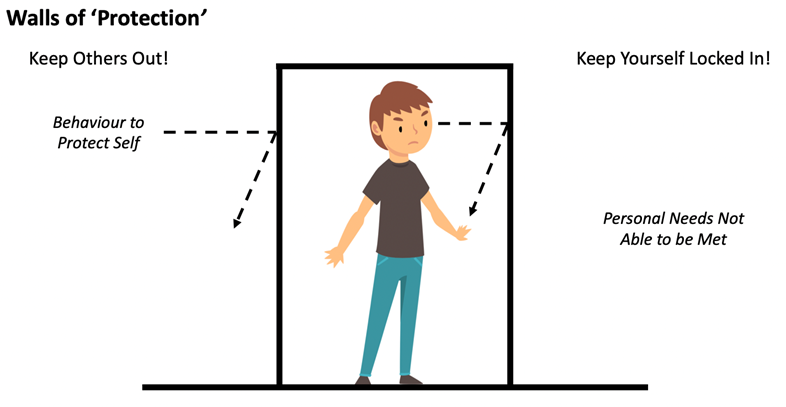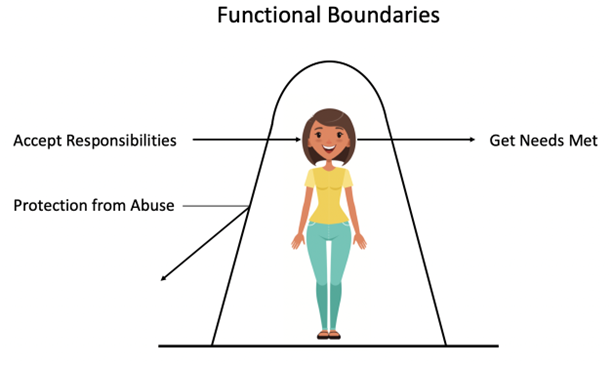Avoiding Manipulation - Part 1: Developing Boundaries
In the next series of Newsletters we will examine methods students use to try to avoid facing the consequences of their behaviour. The descriptions of the various strategies they use are universal and understanding these will help you navigate through your day-to-day life. As indicated in our previous work, behaviour is initiated when we are in disequilibrium, that is our sense of self is being threatened or the things we require are out of reach. It is at these times we need to act in a way to change either our beliefs or the environment we face. Beliefs are very difficult to modify and so the natural, first response is to change the environment. In our work the focus is on managing the student’s behaviour and so we will concentrate on the tactics they may employ to get the teacher to change their behaviour, mostly to avoid a negative consequence.
This interaction between the teacher and student operates in the part of our cognitive system which deals with our social contacts. Disagreements in these exchanges can produce levels of stress that are very uncomfortable. In the past children have developed behaviours that will protect them from the painful feelings associated with experiences of pain or rejection. For the children on whom we focus, those with severely disruptive behaviours, it must be remembered that these behaviours were established in their early childhood.
These children learned how to act in a way that protected them because in their social environment they offered some defence against the behaviour of their abusers. Their actions were functional in a dysfunctional family, but are ineffective in a ‘normal’ environment. Because these tactics had worked it is understandable that they will use them when similar situations arise. This continual return to behaviours that alleviate psychological pain is at the heart of addiction.
The illustration below demonstrations how this practice operates identifying the types of addiction people exhibit.

The use of the term addiction is in a limited sense. In the literature that relates to addiction there are a range of defined types of behavioural addictions but for this work I have placed them in three categories, substance, activities and people, the latter being behaviours we habitually use to relieve the immediate stress from threatening personal interactions. These behaviours are what ‘build the walls’ around the individual to keep the stress out. These walls are impervious which ensures the stress can not get in. The tragedy is that not only does it shield the individual from stressful threats, it also excludes the information that might help the individual deal with the distressing problem in a way that develops behaviours that would ensure the environmental conditions could be addressed in a productive manner.

The figure above illustrates this point. Of course the addictive behaviours, the walls created by specific actions may keep the stress out they also imprison the individual who can not grow in the confronting environment.
This brings us to a discussion about boundaries, specifically in regard to these issues surrounding manipulation. For detailed information about boundaries see:
Our personal boundaries are the physical and psychological space between you and the outside world. They define where you start in relation to others and how that relationship can cause stress; in fact any intrusion of your boundary will trigger an emotional response. Boundaries are primarily there to protect the individual in the same manner as those walls discussed above but they are not there to limit pleasure. For example, when you hold your child in your arms the emotions are so rewarding just as when your loved-one holds your hand. These intrusions into our boundaries meet our needs.
The effect the contact has on you depends on your current set of beliefs and emotional memories about the nature of that contact and how it matches with your sense of self.
In fact, boundaries are an expression of your sense of self. This is why those children who have suffered abuse find it very difficult to let others in, for them violation is associated with physical or psychological pain, the walls have kept them alive. It takes a great deal of courage to take down those walls!
Simply put boundaries are controlling what is OK and what is not OK for you!
- When we let people get away with what’s not OK we resent them
- When we assume that people are doing the best they can – they are not being ‘OK’ deliberately, we don’t resent them
- You can never know if the other person is doing the best they can, but if you assume they are then it makes it easier for you to deal with them with compassion. It is generous to make this assumption and it will create a great change in the way you deal with these students.
- You become more authentic in your approach to others
- We are not comfortable setting boundaries, it is natural to want:
- The students to like you
- To not upset the students
- To punish the students
The illustration below clarifies the concept of boundaries.

In this essay I have explained the concept of how the behaviours we adopt to protect ourselves in an abusive situation become the behaviour we believe will protect us. Unless we learn new ways to deal with similar challenges in a healthy environment we will revert to these behaviours. This is at the heart of addiction, just as that well-worn maxim points out ‘insanity is doing the same thing over and over and expecting different result’!
The development of boundaries, for these children is extremely difficult because it relies on understanding the processes of being nourished in a healthy environment and trust. This is where the teacher can be their restorative chance. If I could provide only one skill to those children it would be to have them develop healthy boundaries.